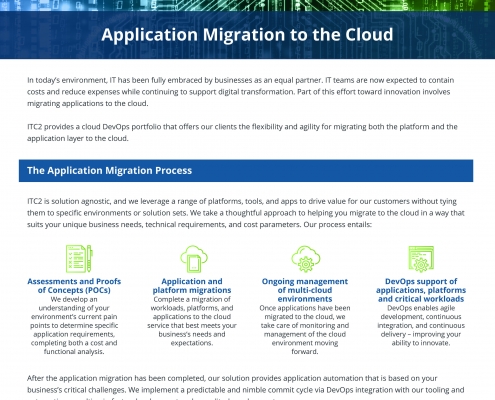What is Cloud Migration?
The “future” of cloud computing is here, and many companies are choosing to transform their IT operations by employing a cloud migration strategy to stay competitive in the industry. The process of cloud migration involves moving existing data and applications from their physical or virtual locations to a cloud environment. Although it is a significant, business-wide endeavor, cloud migration implementation using a tailored strategy ensures a multitude of benefits that considerably outweigh the transitional costs.
What Are the Various Cloud Migration Models?
Typically defined by Gartner as the 5 “R’s”, these varying strategies divide cloud migration into generalized methods. The following methods often act as baselines by which companies choose their specific course of action.
- Rehost: This cloud migration strategy is also referred to as “lift-and-shift.” It is typically the quickest and most straightforward approach to cloud migration. Data and applications are simply “lifted” from their current virtual or physical storage setting and “shifted” to a new, cloud-based infrastructure. This form of migration does not require any change to the existing code or architecture of the system being moved; however, considerable planning must take place to properly conduct the shift and avoid errors in the process. Additionally, this method does not fully utilize cloud benefits, as the shifted applications are not optimized for the new environment. Rehosting is serviced through an IaaS (Infrastructure-as-a-Service) provider.
- Refactor: Also named “lift, tinker, and shift,” this cloud migration strategy is similar to rehosting due to the fact that the main architecture is left unchanged. With refactoring, applications are adapted and optimized to employ certain features offered in the cloud. Many companies choose to use a PaaS (Platform-as-a-Service) provider for implementing this method.
- Revise: Building on the complexity of the previous two methods of migrating to the cloud, revising involves making changes to the system’s existing code and architecture. When applications are optimized further to settle in the cloud environment, more features can be taken advantage of and used to their full potential.
- Rebuild: When applying this cloud migration strategy, coded applications are entirely rebuilt or rewritten to fit the new cloud architecture while preserving the existing system’s framework overall. The consumer is also able to benefit from the many features the cloud platform has to offer. Although rebuilding may be very time-consuming, expensive, and risky, it can be extremely beneficial for the company’s standing in their information technology operations to meet their digital transformation
- Replace: Replacing involves eliminating the existing applications in favor of taking on a commercial software system. In this migration, everything is new, other than the existing data that must be migrated over. Replacement as a strategy is similar to the previous method in its high cost and high reward perception. With this cloud migration strategy, companies have the option of switching to a third-party vendor and adopting SaaS (Software-as-a-Service) applications.
What Are the Factors to Consider When Planning a Cloud Migration Strategy?
If your company is looking to transition to the cloud, it is essential to appraise the internal workings of the business and external contact with customers to decide which cloud migration strategy is appropriate. Potential migrations to the cloud typically start with a general assessment of the company. Questions to consider when beginning this process include:
- What is your company’s current standing in its IT operations, environment, and architecture?
- Is your IT department running on a legacy system, or are the applications modernized and easily optimizable for the cloud platform?
- Are there existing applications that must stay on-premise?
- How much is your company willing to invest in the migration?
- Which cloud platform would your company implement: Public, Private, or Hybrid?
- Is growth in your company’s overall performance expected with the adoption of a cloud migration strategy?
Analyzing the possible complexity of your company’s transition to the cloud can deliver a better estimate of how much a custom cloud migration strategy may cost or how much labor to expect. In addition, considering the effects of the challenges that some consumers face in their transitional progress is crucial when creating a strategy. The following aspects are a few of the most common problem areas during migration:
- Cloud migration failure: This can occur at varying times along the route to completion, commonly due to choosing the wrong cloud migration strategy, a lack of planning, or failing to test properly before implementation. It is also essential to have an exit strategy as insurance if the migration does not go as planned. However, this should only be used as a last resort as it negates any previous effort and cost.
- Data security: With increasing amounts of data, applications, and features available in the public cloud environment, it can be challenging to maintain high security in this area. Important data and cloud services may be breached or hijacked by cyber-attackers if your company’s cloud program does not have a reliable security system in place.
Why Should Companies Look to Implement a Cloud Migration Strategy?
- Cost savings: Transitioning to the cloud can be expensive upfront; however, by utilizing the proper cloud migration strategy and optimizing your system to the new environment, savings may present themselves in the long-term through various aspects of the business.
- Work flexibility & cloud availability: With a cloud computing setting enabled in a company’s workplace, employees have the ability to answer calls or emails, access their team’s shared documents, or work flexibly from any connected, remote location.
- Scalability & agility: Cloud storage is scalable to your company’s individual needs and can easily accommodate rapid growth or decline in information infrastructure.
- Data recovery: Cloud backup services store copies of your data and applications on a server in a remote location so that they may be recovered in the case of a disaster. This is often easier and more secure than backup/recovery options for physical servers.
- Security: Although having your company’s workplace function predominantly in the cloud makes it appealing to cyber-attackers, implementing a dependable cloud security service can outperform traditional IT security methods.
Download “Application Migration to the Cloud”
How Can ITC2 Help with This Strategy?
At ITC2, we connect our customers to the world with cost optimization through a cloud migration strategy to meet your goals for Digital Optimization®. Our trusted advisors have over 300 years of combined IT experience. They will plan for a successful migration to the cloud with assessment, strategic planning, customized design, negotiation, and a modernized approach to the implementation process. In supporting your business’s unique needs, our experienced IT consultants will aid in the selection process of a cloud migration strategy that will streamline the company’s workforce into the future. This case study demonstrates how ITC2 successfully helped a company with their cloud migration strategy. Let us streamline your cloud migration strategy today.
About ITC2
ITC2 is a Gartner recognized Minority Business Enterprise Supplier with a 94% customer satisfaction rating from Dunn & Bradstreet, a requirement to do business with Federal, State, County and City Governments.
For more information, call (404) 507-2105, visit ITC2.net, follow us on Facebook (@ITC2.net), LinkedIn (@ITC2), YouTube (@ITC2), and Twitter (@ITCtwo).










Leave a Reply
Want to join the discussion?Feel free to contribute!